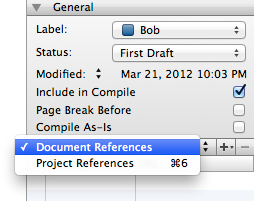Figure 5-7: Choose between project and document references.
Getting the Skinny on References
Back in the old days — when I was, uh, five — I had to trudge to the library to do my research. And if the books I needed were part of the reference section that couldn’t be checked out, or my sources were on microfiche, I had to make copies to lug home, where I might or might not be able to find them again when I needed them.
Now, so much is available online or in electronic format, the lugging part is easy — but that doesn’t always mean you can find a resource again when you need it.
Scrivener solves this problem with references. References provide you with quick access to research files or websites that you want to associate with your project or document, but don’t want to import into the project.
Unlike importing (covered in Chapter 2), when you add a reference, all that’s stored in Scrivener is the link to it. When you open a reference, you always get the most up-to-date version. However, if the file or website is moved — or the filename changes — the link doesn’t work anymore.
References are also great for files that can’t be viewed within Scrivener, such as spreadsheets, presentations, or other files created with specialty software.
Access references by clicking the References button at the bottom of the Inspector (refer to Figure 5-1).
Linking to a reference is incredibly handy, but before you start, consider a couple of things:
![]() Do you want the reference linked to the project as a whole or a particular document?
Do you want the reference linked to the project as a whole or a particular document?
![]() Is the reference an existing file within your project, or is it on your hard drive or a website?
Is the reference an existing file within your project, or is it on your hard drive or a website?
References can either be linked to the whole project or a single document:
![]() Project references: Linked to the project and available regardless of which item has the focus in the Editor, Corkboard, or Outliner.
Project references: Linked to the project and available regardless of which item has the focus in the Editor, Corkboard, or Outliner.
![]() Document references: Linked to the document that has the focus. Using document references can be especially helpful when preparing a bibliography.
Document references: Linked to the document that has the focus. Using document references can be especially helpful when preparing a bibliography.
To switch between project and document references, click the References header and select Document References or Project References from the drop-down list that appears, as shown in Figure 5-7.

References (whether they’re project or document references) can either be internal or external, depending on where the original file resides:
![]() Internal references: Links to items within the same Scrivener project.
Internal references: Links to items within the same Scrivener project.
 Why bother if they’re already in the project? Well, if you have a lot of files in your Research folder, internal references save you time by letting you link to those files that are relevant to the document you’re working on so that you don’t have to wade through them all.
Why bother if they’re already in the project? Well, if you have a lot of files in your Research folder, internal references save you time by letting you link to those files that are relevant to the document you’re working on so that you don’t have to wade through them all.
![]() External references: Links to items outside the project.
External references: Links to items outside the project.
